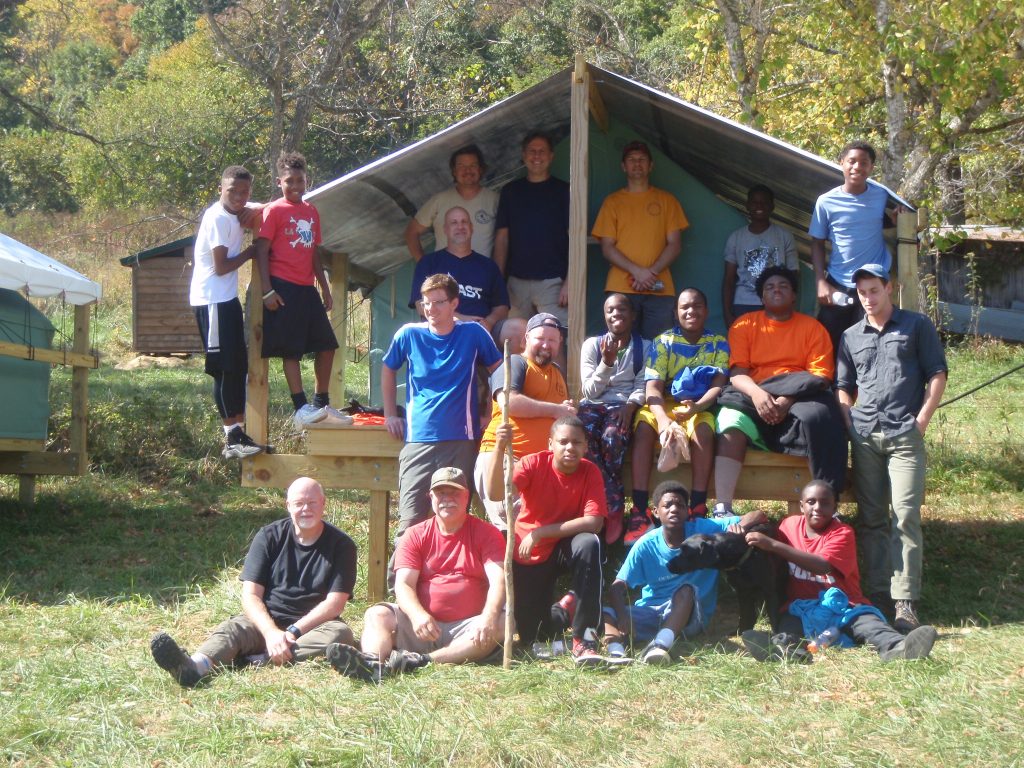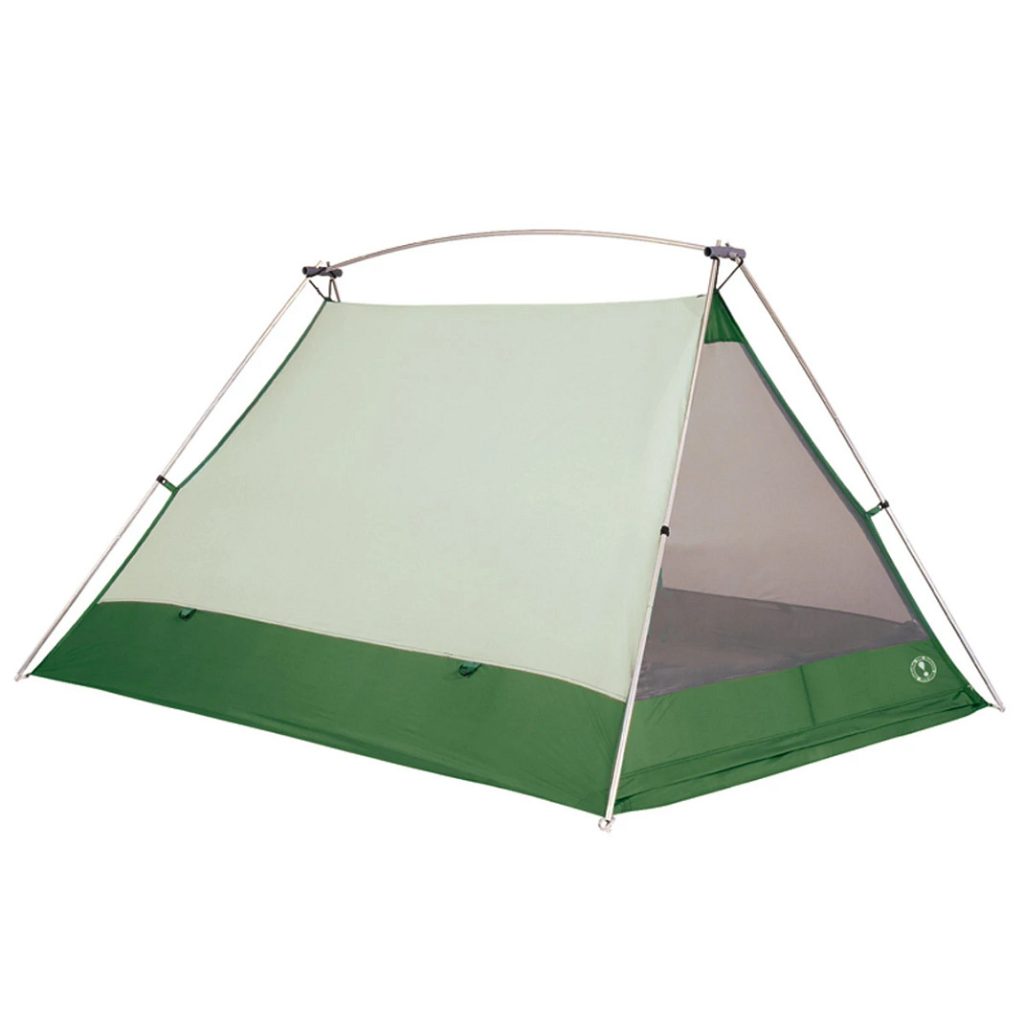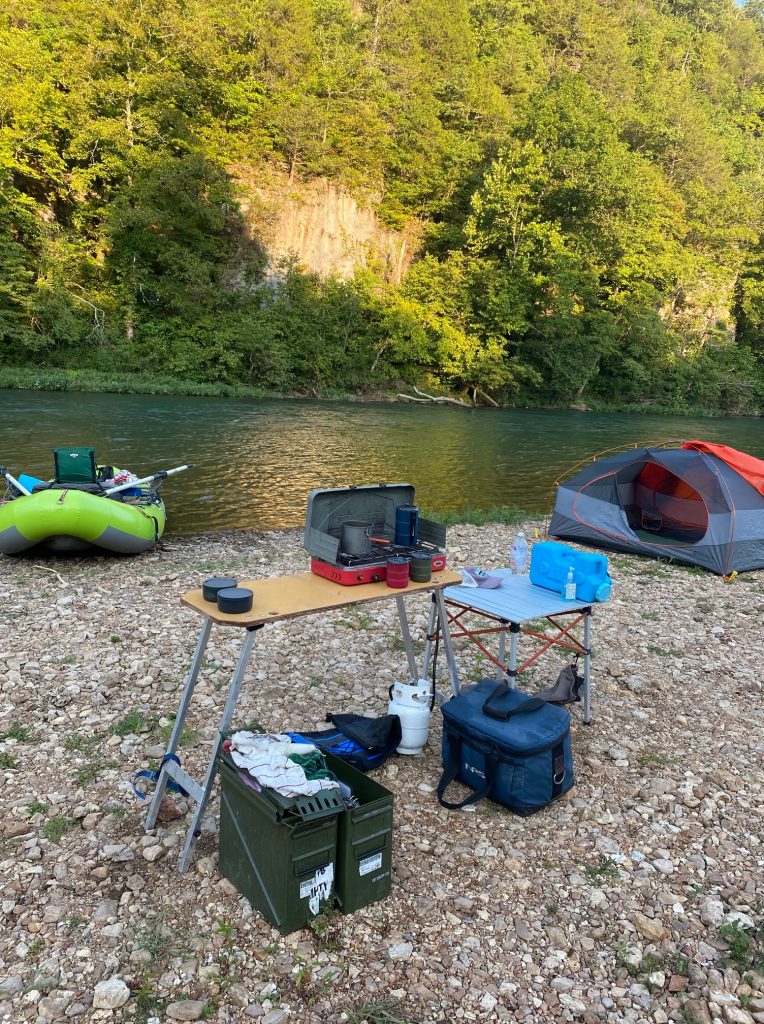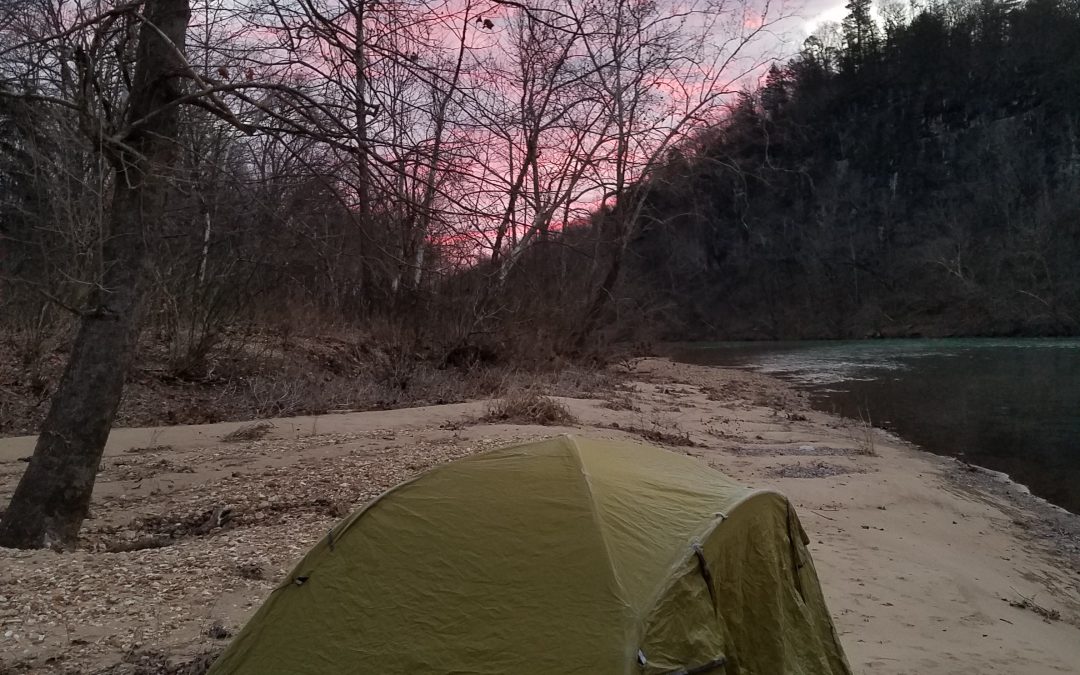You’ve probably slept in a tent. There’s a good chance you own one – or maybe two or three – but have you ever given much thought to this essential part of the camping experience? You should. After all, it’s a man’s (or a woman’s) castle, so let’s talk a little about the tent.
Past Tents
I remember it well. The intrepid members of BSA Troop 2, the Bad News Bears of Scouting, were in the midst of a critical mission to do Scouty things (I couldn’t tell you what, but I’m sure there were knots involved). We were camped at Lake Craighead, where the mosquitoes are the size of crows, in the middle of summer……………….in canvas tents. You may wonder why I recall that the tents were canvas. You may also wonder why I mention this detail in particular. If so, see the previous sentence. I repeat; lake, mosquitoes, summer, canvas.
Now, I will state for the record that I like canvas tents – a lot. There are many of them both old and new in service today, and under the right circumstances they are hard to beat. They’re great for cold weather camping, especially when equipped with a wood stove. They can be left pitched for extended periods of time, which they frequently are, often on wooden platforms at Boy Scout camps. They’re also durable, relatively easy to repair, and best of all – the canvas tent stands as a testament to a storied heritage of outdoor adventuring. I have made many great memories in canvas tents. That said, I have another great memory; that glorious night at Troop 2 HQ when our beloved Scoutmaster unveiled the brand spanking new Eureka Timberlines a generous benefactor had bestowed upon us.
You see, as much as I love canvas tents I sure didn’t love mine that night at Lake Craighead. Despite all the things canvas tents are great at they’re pretty terrible at some other things. They are heavy. They’re not well suited to hot weather, especially when that hot weather comes with mosquitoes. And, canvas will shed water when properly waterproofed, but left to its own devices it will eventually allow those pesky raindrops into your abode. Worse yet, if a neglected canvas tent does get wet it will soon resemble that gym sock you left in your locker for a semester in eighth grade.

Canvas Tents and Their Inhabitants (and likely a smelly gym sock or two) at Camp Jabali
We’ve established that canvas tents are nostalgic, durable and warm. They’re also heavy, skeetery, require extra attention to remain waterproof and can become smelly if not cared for properly. So what are the other options?
Present Tents
Tents today come in a wide range of sizes, configurations and costs. If you’ve tent shopped lately you may have been a little overwhelmed by the dizzying array of brands with price tags ranging from $100 to $1000 and reviews ranging from one star to five. The truth is, most campers will be just fine with a moderately priced tent provided it’s well-chosen and given a little bit of care. Let’s talk about what to look for in a general purpose, three season camping tent.
Fabric: Depending on the tent’s intended use it will likely be constructed of polyester, nylon or Cuben Fiber. We will focus on polyester because it’s inexpensive (with some exceptions), widely available and less likely to stretch when wet. Polyester tents are available from all the well-known manufacturers, most of whom offer several reasonably priced and perfectly serviceable tents that will last years if not abused or neglected. When shopping for a GP tent look at offerings from Marmot, Nemo Equipment, Big Agnes, REI and North Face. There are plenty of other makers of reasonably priced quality tents, but please avoid Coleman and big box store house brands unless you really know what you’re doing. The old saying buy nice or buy twice applies here in spades. Cheap tents just generally don’t hold up to the kinds of conditions one can reasonably expect to encounter outdoors, and with all the affordable options available now there’s no reason to waste your money on one.
Structure: A car camping tent is only as good as its poles. When it comes to tent poles aluminum is far superior to fiberglass, and when it comes to aluminum tent poles DAC is the standard. If you want to read up on DAC by all means do so, but all you really need to do is look for the DAC label when you’re shopping for your new tent. Fiberglass has its purposes to be sure, but tent pole construction is not one of its nobler ones. Fiberglass tent poles are prone to splitting and breakage, especially as they grow brittle with age. Aluminum tent poles aren’t perfect of course. They can be bent when stepped on or subjected to strong winds from unkind angles, but they’re much more durable than fiberglass and more easily repaired in the field. Friends don’t let friends use fiberglass tent poles. Aluminum please.
Construction: There are some variations in construction methods but generally speaking any tent from the aforementioned manufacturers will have been constructed with durability in mind. Our focus is on the seams, mesh and fly.
Just like that beloved pair of blue jeans you can’t bear to part with a tent’s weak spot is its seams, only in this case we’re talking about the potential for water intrusion. Most quality tents come with quality seams (including some form of waterproofing), but there’s always the potential for a little bit of seepage, especially on the floor in substantially rainy conditions. If you experience this you’ll probably just need to seam seal your tent. Don’t worry. It’s not that difficult.
Speaking of water, there’s another way it can sneak into your tent. Condensation is the bane of the tent dweller’s existence. Unfortunately it’s all but unavoidable in certain conditions, but there are things tent makers do to mitigate it. Ventilation is the key to preventing condensation, but what kind of ventilation should we look for? Too much ventilation or ventilation in the wrong place can cause other problems, like rain blowing into the tent or sleeping in a wind tunnel. There are all sorts of ventilation configurations. Some tents rely on mesh doors behind the fabric doors and simply leaving the fabric doors partially or fully unzipped provides enough ventilation to minimize condensation. Others have large mesh panels in the walls and/or roof. These are great for spring and summer camping when the weather is fair and fireflies and stars are abundant but unpleasant bugs are too. I have a tent with lots of mesh and I often pitch it sans fly for just such occasions. If there’s a chance of a stray shower I will clip the fly to the buckles on one side of the tent so it’s ready to deploy quickly.
Whatever ventilation configuration you choose, if you use the fly be sure to guy it out when pitching the tent. Not only will this give you a nice taut pitch, it will maximize air flow and allow the mesh to do its job.
A tent is only as dry and stable as its fly, and I personally won’t buy a tent without a full coverage fly. A well-made fly is critical. Not only does it provide protection from the rain, even when the ventilation components are doing their job, it blocks cold wind and helps hold the tent in place in adverse weather conditions. Look for a fly that buckles in all four corners. Some flys have color coded tabs to help you quickly determine which buckle goes where. This is especially handy when you’re pitching your tent in the dark. A good fly will have multiple well secured guy-out points. The guy-outs work together with the corner buckles and tent stakes to anchor your castle in place.
Capacity and Configuration: It makes sense to consider these together because when it comes to tents, capacity is as much a function of configuration as it is of size. For example, an A frame tent will generally feel less spacious than a dome tent because the A configuration means walls that begin tapering in closer to the floor. Tent makers are notorious for overstating the capacity of their tents, so as a rule I recommend buying up one size. If you need a tent that sleeps three buy one that’s advertised to sleep four. There are exceptions which are usually well documented in the reviews. Speaking of reviews, we all know they can’t always be trusted, but I usually find the ones on the manufacturers’ web sites to be honest, candid and helpful.

The Legendary A Frame Eureka Timberline – World Famous and Ubiquitous In Scout Camps for Decades
Aside from capacity here are some additional things to consider when it comes to configuration.
Compared to other shapes A frame tents are more susceptible to being misshapen in gusty conditions because their profiles are higher and they present bigger targets for the wind. On the other hand, they do a really good job of shedding water for the same reason. If your occupancy number is small and head room is a priority A frame tents are worth considering.
The second and most popular tent configuration is based on the dome shape. This is how most tents today are designed because the lower profile sheds wind and maximizes floor space. Dome tents come with one or two vestibules. I insist on two. Vestibules really improve the functionality of any tent. They provide a means of keeping gear and camp furniture dry without taking up valuable sleeping space, and they often allow you to leave the fabric door(s) open for ventilation, even in a rainstorm. They’re even completely habitable in a pinch. I’ve spent many a night in a vestibule.

Marmot Limelight, a dome tent with the fly off but ready to deploy just in case.
Seek out a tent with two doors. This usually means the price will be a little higher, but in my opinion it’s well worth it. Answering nature’s call in the wee hours is a much less daunting endeavor when you don’t have to step over (or more likely on) your tent mates in the process. An additional door also means additional ventilation, and you know what additional ventilation means.
Floor: The floor of a tent is very important. For obvious reasons it’s the most likely to tear and is usually the point of entry for unwanted water. Careful site selection will help prevent premature wear and leaks. Some campers like to use a footprint, either one made by the manufacturer specifically for a certain tent model or a piece of Tyvek or small tarp. Within the group that uses footprints there’s even an innie versus outie debate. I don’t personally use footprints, but I can understand why some folks do. Footprint or no and innie or outie are matters of personal preference. Proper site selection is not.
Future Tents
Tents today are pretty darned good, but there’s always room for improvement. DAC is constantly working to increase product performance and decrease environmental foot print, especially when it comes to anodizing their aluminum.
Some companies now integrate lighting into their tents, and inflatable and even floating tents are available for purchase. These are essentially novelty items, but who knows what the future holds?
Hammock camping has exploded in popularity and manufacturers are seeking ways to tap into that market with tents made to integrate into hammock camping systems.
Backpacking tents grow lighter each year with the continued introduction of ultralight fabrics like Cuben Fiber into the marketplace, and small independent tent makers are beginning to look for ways to create quality products that appeal to a broader spectrum of outdoor consumers at more affordable price points.
Tarps are enjoying a renaissance as full service camp shelters instead of being relegated to their traditional role as emergency dry space. As consumers discover their utility and versatility they will appear more and more often in campsites.
There’s a tent for every kind of camping, whether you’re backpacking the Ozark Highlands Trail, float camping the Buffalo River or spending the weekend in a state park, and with the wealth of information available today there’s no excuse for choosing the wrong one. Do your crew a favor and spend a little time selecting the tent that best meets your needs. If you’re having trouble with that drop me a line any time and I’ll be happy to help you sort it. And, be sure to check out Tents 101 for more on tent care, site selection and other things to help you help your tent live its best adventure life!
See you out there!
Deuce




